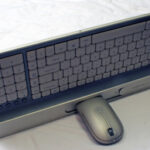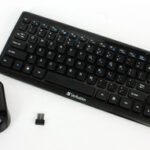In today’s over-technified society, we demand instant gratification and quick responses from all of our gadgets. When our computers run slow our lives slow down. In our frustration we bang on the keyboard, yell at the screen, and raise our blood pressure. The fact is that in an effort to save money, most people buy computers that are under-powered while demanding more performance with each click of the mouse. Priced as low as $300, there are many boxed-deal computers from retailers that can sound like a great deal for a tower, monitor, and accessories. The catch is that these machines are made with ‘left over’ parts.
Manufacturers build custom computers and then have unused, generally low-end, parts remaining. The remnants become computers sold to retailers at a huge discount.
Often these lower-end computers have less random access memory, or RAM, and smaller hard drives. Even with a faster central processing unit, or CPU, they can still bog down when running multiple programs. It’s like a car engine in a semi tractor; it might move, but you can’t put a load on it.
When several programs are opened simultaneously in an under-powered computer, the computer slowly grinds to a halt. The user clicks the mouse repeatedly in hopes of freeing the stalled computer compounding the problem. In addition to the programs already running, the computer is now trying to execute all of the commands initiated by each mouse click.
By the way, this problem is not limited to Windows PC’s but is beginning to have more of an affect on Apple computers as well. Both units require adequate CPU speed, RAM, and available hard disk space in order to function properly. So what can you do?
If you’re buying a new computer, review the specifications carefully. Make sure you buy a computer with the fastest CPU, most RAM and most hard disk space affordable. Upgrading these items later is always more expensive. Computers can also lose efficiency to unwanted software operating in the background.
Malware (malicious software) is transmitted by websites, email, or instant messaging that lurk behind other programs using valuable operating resources. Other causes include viruses, multiple, overlapping security and computer supportmanagement programs, and browser add-ons. The best thing to do is to see a professional, but be cautious.
If the first words out of an IT person’s mouth are, “What’d you do to it,” or they seem impatient with you or unwilling to explain the situation in plain English, then move on and find someone else. Many people taking a computer into a retail electronics store for repairs are reporting a wait time of more than six weeks and often the computer is not repaired.
Discount electronics store repair services have a six-week, or longer, wait, and their in-home service can cost $120 per hour or more. It may be more advisable to call a privately-owned computer repair company to check out your machine for you but, again, be sure to check them out thoroughly before allowing them into your home or business.
Don’t let people sell you what you don’t need, however. If the techno-babble is too much, ask someone to explain it for you and be sure the IT professional you do business with is reliable and not just a teen-aged gamer hired by the big-box guys to drive a clown car and hold a pretend badge claiming to be an IT expert. Ask for references and testimonials from other clients who are not related to the individual.
Finally, plan to do a little research about the problem that is being experienced. Often a complete wipe and fresh reload of a computer is the best solution to multiple problems but be sure to back up your data first. Computer service companies are not responsible for lost data and you sign that liability away when you drop off the computer.






